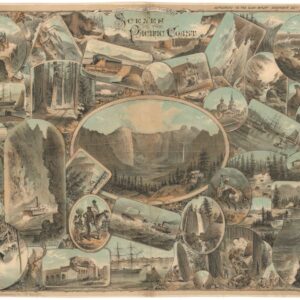Charles Frederick Keller (1852 –1928) was a third-generation artist who left an indelible mark on the canvas of American artistry. Born in Milwaukee in 1852, Keller displayed an innate talent for painting from an early age. His formative years saw him excel academically while nurturing his self-taught skills in painting, encouraged by the artistic legacy of his father and grandfather. Keller’s creative journey commenced with exhibitions of his work at a young age, marking the beginning of a prolific career.
In 1885, Keller embarked on a journey to Europe to study at the Royal Academy of Art in Munich. This period honed his artistic prowess and exposed him to the influential Munich School style, characterized by its naturalistic approach and profound chiaroscuro.
Returning to the United States in 1892, Keller settled in New York City, embracing a dual career as a commercial artist while passionately painting in his studio during spare moments. At the same time, he was closely involved with artistic communities like the Art Students League and the Salmagundi Club. Keller’s legacy endures through his diverse body of work, including exhibited pieces like The Sheep-fold showcased at the groundbreaking New York First Annual Exhibition of The Society of Independent Artists.
Keller’s canvases are imbued with a profound depth of emotion and a masterful portrayal of scenes ranging from pastoral landscapes to poignant portraits. His passing in 1928 marked the end of a prolific artistic journey that continues to resonate through the halls of American artistry, leaving behind an enduring legacy of creativity and dedication to his craft.
-
- Add to cart
- California, Rare Maps of Curiosities - Miscellanea
Scenes on the Pacific Coast.
- $2,800
- Pacific Panorama: Keller's Visual Tapestry of the West Coast.
